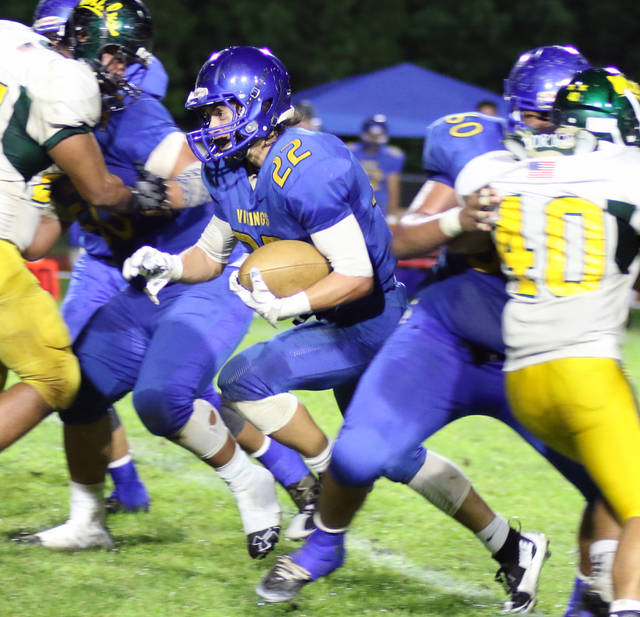When the 57th annual Hawaii Interscholastic Athletic Directors Association conference kicks off Monday at Hilton Waikoloa, the most interesting or significant issue to tackle is the OIA’s Open football chess match decisions.
When the 57th annual Hawaii Interscholastic Athletic Directors Association conference kicks off Monday at Hilton Waikoloa, the most interesting or significant issue to tackle is the OIA’s Open football chess match decisions.
Last August, the HHSAA approved a one-year pilot for the Open, Division I and Division II format.
The OIA’s four Division I semifinalists (Kahuku, Farrington, Kapolei, and Waianae) secured spots to the Open tournament, while the early round losers (Campbell, Mililani, Leilehua, and Moanalua) received berths to the Division I tournament, captured by Mililani.
If the winners advance to Open and losers drop to Division I format remains, then it’s all gravy for the OIA, which increased its state participation from five to 10 teams.
The OIA’s best usually can battle the ILH’s best — pick two among the trio of Kamehameha-Kapalama, Punahou, and Saint Louis, the inaugural Open champion.
However, the HHSAA, the governing body that runs the state tournaments, has recommended that leagues must declare which division their schools will participate in by the HHSAA declaration deadline for all sports. The HHSAA also recommended six teams for all three divisions.
If the HIADA votes are tallied to enforce a classification date, i.e. before the season, then things get tricky because Campbell and Mililani are OIA giants and consider themselves to be on the same level as Saint Louis and Kahuku and the two OIA Leeward side schools, Kapolei and Waianae.
Campbell’s last state appearance was in 2013 when the Sabers crushed Hilo 47-27 at Keaau High. In the semifinals, Mililani mauled Campbell 41-7.
That showed the disparity between the leagues and a need for a three-tiered format, which helped the BIIF. The league increased its state participation from two to three teams: Hilo and Waiakea in Division I and Konawaena in D-II.
It’s no secret that the BIIF wants to knock an Empire State Building-sized monkey off its back at the state tournament. The BIIF is the only one out of five leagues (OIA, ILH, MIL, and KIF) to have not won a Division I game. The inaugural Division I tournament started in 1999; that’s 0 for 18 for the BIIF.
Last season, Hilo came close but lost to Leilehua, the OIA’s No. 3 team with a 4-7 record, 26-25 in the first round at Keaau High. The Mules’ record was deceptive because they played in the OIA Red division, which included Kahuku, Farrington, and Mililani.
On any given day, any of the OIA’s six-pack could knock off each other in a game or playoff. But if a declaration date is set, then two of the OIA’s top six-pack (Kahuku, Farrington, Kapolei, Waianae, Mililani, and Campbell) won’t have a second life following a loss in the league playoffs.
For those wondering if the topic of the OIA-ILH football alliance, where the leagues would play each other in the regular season, is on the HIADA’s agenda, it’s not — that’s an issue between the two leagues.
Among the other proposals to be discussed is the creation of a Division II water polo tournament. An eight-team D-II field would be boost to BIIF, which has never had a team reach the state final.
One of the BIIF’s proposals is to increase state medals for track and field from six to eight participants – basically, everyone who reaches the finals gets a medal. The ILH proposed the same thing for swimming.
“The BIIF didn’t have a lot to add this year,” Waiakea athletic director Tom Correa said.
The league also submitted a proposal to allow schools to make a declaration for Division I or II for each sport one week after each sport’s start date. Presently, all declarations for all sports need to be made in June.
The BIIF stated a later declaration date would give schools a chance to evaluate their current team and to better align their program for the coming season. The league also noted that there is no real need for schools to declare so early in June.
Most of the BIIF’s concerns are already well-covered with the addition of more team sports playing first-round games on the neighbor islands.
Last year at HIADA, basketball, soccer, volleyball, and water polo were added to the list of Division I team sports with first-round, play-in games.
If BIIF runner-up teams win at home, they advance in the state tournament. If they lose, their season is over and save on travel costs and missed school time.
Baseball and softball are two Division I sports without the first-round play-in games.
A Monday game at home would have helped Waiakea, which had a brilliant run at states over four days but eventually ran out of pitching. The BIIF runner-up Warriors fell to Maui 6-4 in the state championship.
The extra rest from a Monday play-in game isn’t as crucial for softball because pitchers don’t have a pitch count like baseball.

